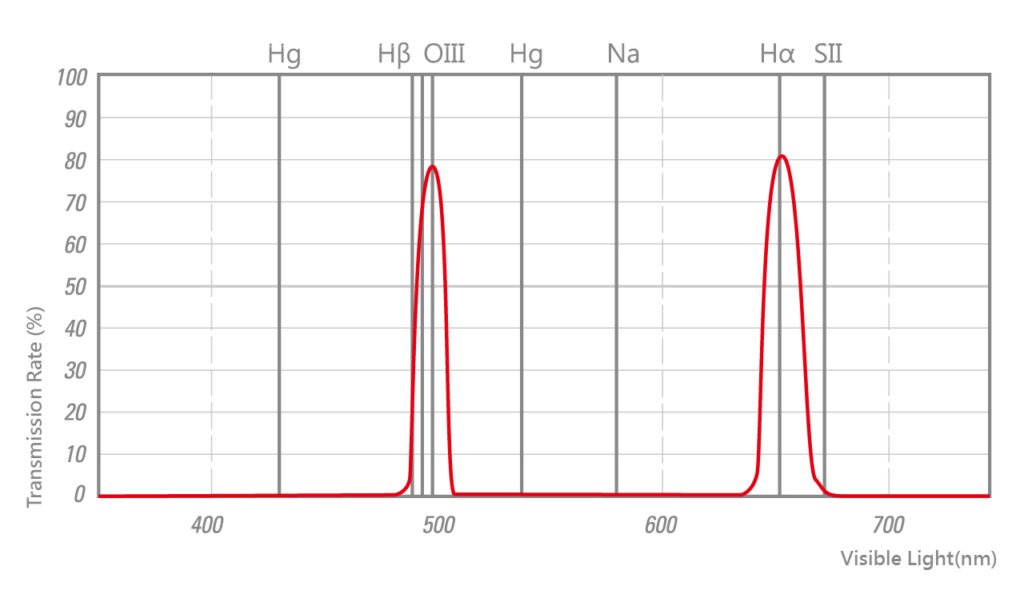We always heard about light pollution filters for starry sky photographing. People who live in urban areas always suffer from light pollution when they look at the night sky. However, there are various kinds of filters in the market. Are they effective in filtering light pollution? How should we choose when most brands launch several different models of filters?

We use Light Pollution Filters to filter the light that we don’t want to expose in the photo. There are several themes like Starry Nightscape, Deep Sky Objects, and Planetary Photography in astrophotography. Every topic has its specific requirement of the light spectrum that has to be filtered away. Therefore we have different filters for different purposes.


Different Level
We have to understand what light pollution is at first. City lighting traditionally uses Sodium (Na, generally yellow light, 589nm wavelength) and Mercury (Hg, many different wavelengths) lamps, which are unwanted artificial light sources for astronomical observation. Therefore we used filters to eliminate the effect of these two kinds of light wavelengths. LED lighting has also been introduced in recent years, and a few brands have started to develop related products.
Most brands have two filter models with similar purposes but different levels of filtering. Some brands categorize them as Starry Nightscape filters. It is easy to understand that it is mainly used for shooting starry sky subjects with ground scenes. The following charts are given from the brand to show the characteristics of the filters.


The values on the vertical axis refer to the penetration rates of the corresponding light frequencies, and the horizontal is the wavelengths. We can see that the penetration rate of Sodium (Na) and Mercury (Hg) in the left chart is higher than that in the right, which means that the represented filter of the chart on left is less aggressive in dealing with light pollution.
Although we don’t want the effect of light pollution, filtering out the light pollution will also eliminate colors similar to light pollution. We got a result with unnatural colors. For example, the chart on the right shows that the represented filter has totally blocked the yellow and orange light spectrum.

The less aggressive filters retain more natural colors. You can decide which is the best choice according to the light-polluted level.


Different purpose
Some filters can block more wavelengths than starry nightscape filters. However, the more wavelengths filtered out means less natural in color. These filters are not suitable for shooting starry nightscapes or night scenes.
Sometimes we take pictures of Deep Sky Objects like nebula. Many nebulae emit a near-infrared light called H-Alpha with a wavelength of about 656nm. They also emit Oxygen III (500.7nm) and Sulfur II (672nm) light.
The following are two models of filters from a manufacturer.


The spectrum chart shows that both filters focus on letting the near-blue and near-red bands pass through and blocking the other. The passed bands include the H-Alpha, Oxygen III, and Sulfur II wavelengths.
The represented filter of the chart on the right side is known as the “duo-narrowband” filter. You can see how “narrow” the passed bands are. The following is the spectrum of a duo-narrowband filter owned by the author.

In general, we use to photograph nebulae.

Comparing the Astro-MultiSpectra filter and the Duo-Narrowband, you can see the different effects of different levels of filters on the picture.



Of course, starry nightscape filters are also suitable for photographing Deep Sky Objects. We can keep the color more natural with less aggressive filters, but you need a place with better weather conditions and less light pollution. You can first learn what elements is the target consists of to decide what filter to use.
The last words
The nature of different light pollution filters is to filter the different spectrum wavelengths of light. You can consider the theme and choose the corresponding model.
The use of light damage filters will affect the color. Please do not resist the post-production. At least the post-adjustment of the white balance is still necessary.
Recently manufacturers launched filters used in front of the lens ( screwed in filter thread) and Clip filters placed between lens and sensor. Clip filters allow you to use one filter for the entire line of lenses, but whether front or rear, there are its use or about the limitations of the picture quality. Click this link to read the article covered the above topic.
The last piece of advice is that please don’t save money on filters. A good filter may not let you take good pictures, but a bad filter can definitely ruin your photos.
Leave a Reply